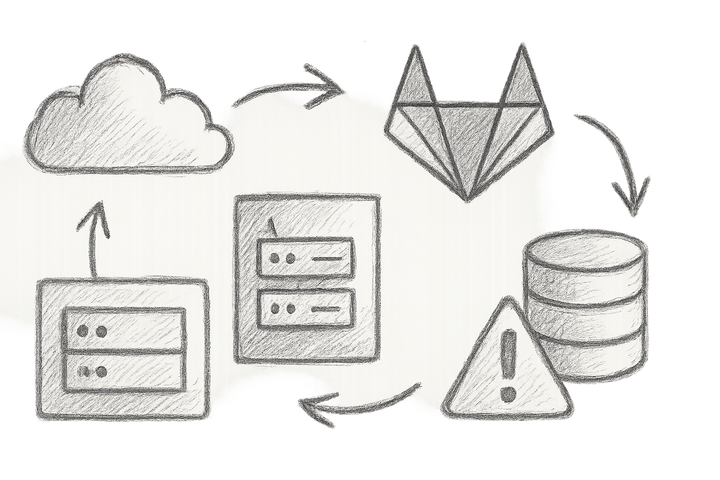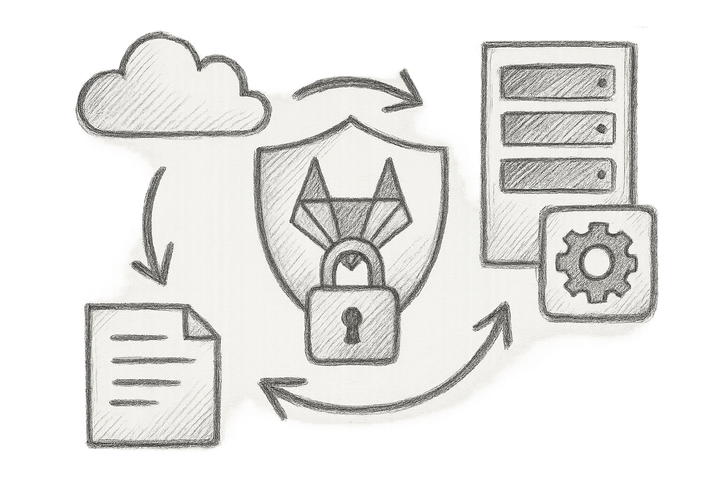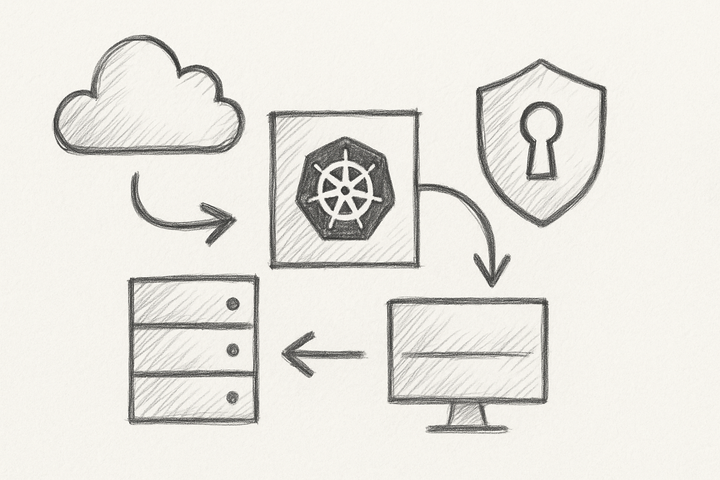Global Microsoft Azure Outage (Oct 29, 2025)

Opening: What if a Single Misconfiguration Could Take Down Millions Globally?
On 29 October 2025, a seemingly innocent configuration change to Azure Front Door ignited a blazing inferno that plunged Microsoft Azure, Microsoft 365, Xbox Live, and thousands of dependent services into darkness for over twelve hours. Imagine, for a moment, that the crown jewels of cloud infrastructure—the global layer 7 edge, TLS termination, content delivery, and DNS resolution—rest on a knife’s edge balanced on a single control plane setting. This wasn’t a data centre crash or hardware failure; it was a software deployment defect that cascaded worldwide.
If you’ve ever believed that cloud giant platforms are invincible or that sticking to a single CDN or DNS provider is safe because “it’s all managed,” think again. Here’s a “wait, what?” moment: the entire Microsoft cloud empire nearly toppled because of one tenant-level config slip-up. For those of us in the trenches of DevOps firefighting, this was less a surprise and more a painful validation of hard-earned battle scars.
Let me walk you through the anatomy of this crisis—why Azure Front Door’s DNS dependency created a perfect storm, how the outage rippled through global infrastructures, and most importantly, what pragmatic warriors like us can do to avoid being caught flat-footed when the next hammer drops. Buckle up—this tale includes some brutal truths, a few dark laughs, and actionable hardening tactics you won’t want to miss.
1. Introduction: The Azure Outage That Shook Global Cloud Operations
The incident started roughly at 16:00 UTC on 29 October 2025, catching thousands of businesses and tens of millions of users off guard. Critical Microsoft 365 services like Outlook and Teams, Azure management interfaces, gaming services such as Xbox Live, and countless third-party applications reliant on Azure Front Door's global edge fabric became unreachable or painfully slow.
Downdetector tallied over 16,000 reports for Azure and 9,000 for Microsoft 365 — a drop in the ocean compared to the estimated hundreds of thousands affected globally. Microsoft's own status dashboard flashed Critical warnings across every major Azure region, leaving no corner of the globe untouched Microsoft Docs: Azure Service Health MO1181369.
This wasn’t a mere regional blip or a trivial data centre hiccup. No, this was systemic failure at the very fabric routing and DNS services powering Microsoft's sprawling cloud ecosystem—a staggering outage lasting over twelve agonising hours. That’s practically a medieval eternity in cloud SLAs and a multi-million-pound disruption for companies banking on “five nines” availability.
2. Decoding the Root Cause: Azure Front Door and DNS — A Perfect Storm
Azure Front Door (AFD) is Microsoft’s globally distributed, Layer 7 application delivery service. It’s the traffic controller juggling:
- TLS termination at edge locations worldwide
- Global HTTP/HTTPS routing with intelligent load balancing
- DNS-level routing for endpoints
- Web Application Firewall (WAF) enforcement
- CDN-style content caching with origin failover
AFD is everywhere—from Microsoft Entra ID authentication to the Azure Portal, from Xbox sign-in to Blob storage endpoints. In short, it’s the digital bouncer at all the hottest cloud parties.
What Went Wrong? A configuration pipeline defect allowed an invalid tenant-level control plane change to slip through unchecked across all Azure Front Door Points of Presence (PoPs). This invalid config pushed many nodes into a failed state, triggering widespread timeouts, TLS handshake failures, and a barrage of HTTP 502/504 gateway errors.
Microsoft's load balancers tried their best, draining affected nodes and concentrating traffic on the remaining healthy ones. Alas, these survivors couldn’t handle the sudden surge, collapsing under the pressure and exacerbating the impact globally.
Then the DNS resolution failures took centre stage. Since Azure Front Door’s DNS is tightly integrated with routing, delays or dropped responses meant clients faced total service blackouts. Here comes another “wait, what?” moment: a single point of failure at the DNS edge caused a worldwide blackout—hardly the resilient cloud ecosystem many hoped for Breached Company: Microsoft Azure Front Door Outage Deep Dive.
3. The Operational Pain Points Revealed
I’ve witnessed my fair share of outage calamities, but this one read like a horror novel written by Murphy’s Law:
- Lost Access to portal and management consoles crippled incident triage and recovery pacing. Manual overrides? Limited or non-existent.
- Authentication Failures due to Azure AD linkage meant even legit users couldn’t sign in to fix or roll back changes.
- No Fallbacks: Nobody thought multi-CDN failover or feature-flagged rollbacks were urgent enough to implement. Spoiler alert: they are.
- On-Call Burnout: Kubernetes clusters can’t help when the ingress layer itself is broken—teams scrambled through a fog of cascading alerts with sparse diagnostics.
- Blind Spots in DNS/CDN architecture rendered traditional layered defences toothless.
In plain English: downtime became a production reality, grinding user frustration to a halt, and cloud-native platform dependency turned into a poison chalice.
4. Aha Moment: Why One CDN or DNS Provider Is Never Enough
Here’s the kicker: cloud providers parade their “global availability zones,” but their own infrastructure hides single points of failure—especially at the CDN and DNS layers.
Relying entirely on Azure Front Door’s DNS and global edge routing? Like putting all your eggs in one very shiny, ridiculously fragile basket. When that basket shatters, you’re stuffed. The cherry on top? AWS’s US-East-1 DNS collapse just a week before showed the exact same structural weakness. Two hyperscalers, back-to-back, exposed identical Achilles’ heels AWS Outage Post-Mortem October 2025.
For a deeper dive into the fallout of such cascading failures, check out my battle-tested resilience patterns from the October 2025 AWS US-EAST-1 outage.
Multi-CDN and multi-provider DNS strategies have graduated from “nice-to-have” to absolute must-haves in resilient cloud architecture. Multi-provider failovers, geo-aware traffic steering, and stale DNS caching techniques slash outage blast radii and keep services humming when the titans stumble.
5. Battle-Tested Mitigations: Building Resilience Against CDN and DNS Outages
Multi-CDN Architecture: Diversify Your Edge and DNS Roots
Concept: Use multiple CDNs and DNS providers concurrently. Routing traffic through more than one provider mitigates the blast radius of a single vendor failure.
Pros:
- Reduces single points of failure
- Optimises latency with geographic load balancing
- Avoids vendor lock-in and sunny-day complacency
Cons:
- Complex to set up and maintain — because hey, if it were easy, everyone would do it
- Higher cost footprint — welcome to cloud spending reality
- Risk of inconsistency without rigorous config sync and testing
Example: Azure Front Door + Cloudflare Dual-CDN
# Simplified Bicep snippet to enable Azure Front Door with secondary DNS fallback
resource afd 'Microsoft.Cdn/profiles@2022-05-01' = {
name: 'myAfdProfile'
location: 'global'
sku: {
name: 'Standard_Microsoft'
}
properties: {}
}
resource azDns 'Microsoft.Network/dnsZones@2018-05-01' = {
name: 'contoso.com'
location: 'global'
properties: {
zoneType: 'Public'
}
}
resource azARecord 'Microsoft.Network/dnsZones/A@2018-05-01' = {
name: 'app.contoso.com'
parent: azDns
properties: {
TTL: 60
ARecords: [
{
ipv4Address: '13.107.246.43' # Azure Front Door IP
}
]
}
}
# Note: Secondary DNS (e.g., Cloudflare) configured with lower priority TTL for failover
Note: Add automation and validation tooling to synchronise configurations across providers and test failovers regularly.
Grace-Mode Feature Flags: Soft-Failover in Application Logic
Feature flags can orchestrate graceful degradation when CDNs or DNS providers falter. This is your insurance policy for “just in case.”
Implementation Strategy:
- Detect upstream CDN/DNS errors via monitoring or error rates
- Toggle flags to serve static cached pages, fallback UIs, or alternative data sources
- Use platforms like LaunchDarkly or open-source tools like Unleash for quick rollout
Sample snippet with Node.js and LaunchDarkly SDK:
const LaunchDarkly = require('launchdarkly-node-server-sdk');
const ldClient = LaunchDarkly.init('YOUR_SDK_KEY');
async function handleRequest(req, res) {
const user = { key: 'user-key' };
const isGraceMode = await ldClient.variation('grace-mode', user, false);
if (isGraceMode) {
// Render degraded UI or serve cached page
res.sendFile('/path/to/cached/static.html');
} else {
// Normal processing path
processRequestNormally(req, res);
}
}
Tip: Include error handling if feature flags are unreachable during outages.
Deploying grace mode before crises strike means your app degrades elegantly, not crashes spectacularly. A cliffhanger? What happens if feature flags get swallowed in the outage? You guessed it—design with fallback logic baked in.
Stale-While-Revalidate Caching for Edge and DNS Resolution
One often-overlooked resilience layer: DNS cache-control.
Configure stale-while-revalidate directives to let clients accept stale DNS/CDN cache responses while background queries fetch fresh data. This smoothes over brief upstream outages rather than slamming doors in users’ faces.
Azure Front Door configuration example:
{
"cacheConfiguration": {
"queryStringCachingBehaviour": "IgnoreQueryString",
"cacheDuration": "00:05:00",
"cacheControlHeaderBehavior": "AllowCacheControl",
"cacheControlMaxAge": "00:01:00",
"cacheRevalidationAge": "00:10:00",
"staleWhileRevalidate": true
}
}
DNS resolvers—CoreDNS, BIND, et al.—can also be tuned with parameters like max-stale to extend DNS response caching during upstream DNS hiccups RFC 5861.
Monitoring and Alerting: Early Detection is Half the Battle
Observability must reach into CDNs and DNS layers, or you’re flying blind.
- Use OpenTelemetry to instrument edge latency and error codes OpenTelemetry
- Deploy synthetic probes targeting CDN PoPs and DNS paths to simulate real-user scenarios
- Real-time dashboards tracking TLS handshake failures and DNS query anomalies are non-negotiable
- Set alert thresholds for saturation and failover events — don’t let customers be your early warning system
Waiting for the hell to break loose? That’s not resilience. For practical instrumentation and visibility tactics, see System Monitoring and Instrumentation Tools Demystified.
6. Validating Your Hardening: Testing and Best Practices
Chaos engineering isn’t just for microservices anymore—it’s your breakfast ritual.
- Schedule DNS/CDN failover drills in staging environments
- Simulate invalid config deployments or cut off primary DNS servers on purpose (yes, you read that right)
- Track application latency, error rates, and service behaviour during drills
- Continuously refine rollback scripts and traffic steering automation
Tools like “ChaosDNS” or Netflix’s “Simian Army” modules for DNS/CDN failures can automate these tests—because nothing screams “competent ops” like breaking things on purpose to avoid breaking things unexpectedly.
7. Forward-Looking Innovation: The Future of Azure Front Door and DNS Resilience
Brace yourselves—the battle is far from over.
We can expect cloud providers to evolve with:
- AI-driven multi-CDN traffic choreography, dynamically steering traffic away from sick endpoints
- Wider deployment of DNS-over-HTTPS (DoH) and DNS-over-TLS, hardening resolution layers from tampering and outages
- Decentralised, blockchain-backed DNS to eliminate single trust domains (no more “single basket” scenarios)
- Zero-trust security integrated at edge routing layers, reducing breach surfaces during cascading failures
But here’s the kicker: no magic bullet. The best defence is relentless vigilance and embracing failure as the norm, not the exception.
8. Conclusions and Next Steps for DevOps Teams
This outage hammered home one brutal truth: resilience isn't a vendor checkbox; it’s a relentless, battle-hardened strategy.
Your checklist to start today:
- Architect with multi-CDN and multi-DNS providers—don't remain azure-centric
- Implement stale-while-revalidate caching on CDN and DNS paths
- Build feature-flag driven graceful degradation and emergency failovers
- Automate config deployments with safe rollback controls and validation gates
- Instrument DNS and CDN health aggressively with synthetic probes and alerting
- Run chaos engineering drills simulating CDN/DNS outages regularly
- Link your incident response playbooks to these failure modes with clear escalation paths
KPIs to track:
- DNS error rate and failed DNS queries
- CDN PoP availability and latency distributions
- Time to detect and time to remediate edge failures
- Feature flag toggle rates during incidents
This isn’t pie-in-the-sky advice; it’s forged in the crucible of fire. If you really want uptime beyond marketing slogans, prepare for when the frontline cracks. When a single DNS record—or a misapplied config change—can topple giants, resilience becomes the art of expecting the unexpected, automating the unthinkable, and laughing in the face of chaos.
References
- Microsoft Azure Front Door Outage Report, Microsoft Docs: Azure Service Health MO1181369
- Breached Company: Microsoft Azure Front Door Outage Deep Dive - https://breached.company/microsofts-azure-front-door-outage-how-a-configuration-error-cascaded-into-global-service-disruption/
- Forbes: Lessons from the Azure Outage - https://www.forbes.com/sites/emilsayegh/2025/10/30/the-clouds-halloween-scare-lessons-from-the-azure-outage/
- AWS Outage Post-Mortem (October 2025) - https://aws.plainenglish.io/the-aws-outage-post-mortem-that-proves-everything-you-know-about-cloud-resilience-is-wrong-6dc73ef67dc4
- OpenTelemetry Project - https://opentelemetry.io/
- LaunchDarkly Documentation - https://docs.launchdarkly.com/
- RFC 5861: HTTP Cache-Control Extensions for Stale Responses - https://tools.ietf.org/html/rfc5861
Internal Cross-Links
- Learning from October’s AWS US-EAST-1 Outage: Battle-Tested Resilience Patterns to Prevent Cascading Failures
- System Monitoring and Instrumentation Tools Demystified: Battle-Tested Osquery, Sysmon & Kolide Fleet for Real-World Visibility and Control
Image Description:
Visual illustration of global Azure Front Door points of presence (PoPs) worldwide, highlighted in red to indicate widespread outages spanning Americas, Europe, Asia-Pacific, Middle East, and Africa, overlaid with DNS query failure heatmap and cascading error propagation arrows.
If you thought this was just “another cloud outage,” I hope you now see the ominous cracks beneath our digital skylines and why we must fight smarter, not just harder.
Cheers for reading—may your next incident be slightly less catastrophic and your chaos drills unforgivably relentless.
— Your battle-scarred DevOps storyteller



